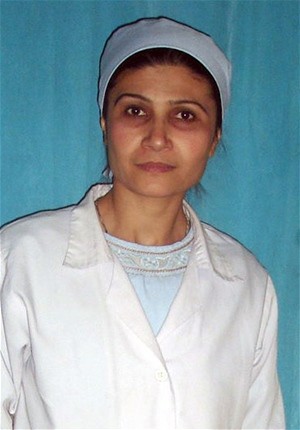
Mehrunnesa is an example of the positive impact a skilled birth attendant can have on a community.
USAID/HSSP
USAID midwifery education program trains skilled birth attendants.
8 MARCH 2010 | KABUL, AFGHANISTAN
Afghanistan suffers from one of the highest maternal mortality rates in the world – currently, one in six women dies during childbirth. To protect mothers and improve the health of their children, USAID is working with Afghanistan’s Ministry of Public Health to rebuild the country’s midwifery workforce. The national midwifery program prepares competent and qualified midwives to work in underserved areas across the country.
The program has had a significant positive impact on the health and wellbeing of mothers-to-be, and communities have come to view midwives as essential. The number of professional midwives in Afghanistan has quadrupled, and midwives are deployed across the country, serving in hospitals, health centers, and communities. As of May 2009, nearly 2,000 midwives had graduated from the program and 85 percent are now working in a hospital or health facility. More than 675 midwifery students are currently enrolled in the program.
The presence of midwives in remote communities is making a difference in the lives of mothers and children throughout Afghanistan. For example, prior to the program, it was rare for women in the Qurghan district of Faryab province to deliver their babies with the help of a skilled birth attendant. However, since Mehrunnesa Ebadi, a trained midwife, arrived in the district in 2006, she has helped hundreds of women safely deliver their babies in the district’s health center.
Maternal health services have improved overall in Afghanistan, particularly in provinces with midwifery program graduates like Mehrunnesa Ebadi. Prenatal care visits are up 17 percent, and the number of women delivering babies using skilled birth attendants is up 40 percent, in areas with midwifery school programs that had graduated students by 2007. In one district, a midwifery graduate noted that the number of deliveries in the health facility where she works increased from zero to 30 per month.
Now, fewer mothers and infants die during childbirth, and communities have come to trust midwives and the benefits they provide. “Now, the name midwife is like a relief to mothers; they feel safe under the midwife’s care,” happily explains Pashtoon Azfar, president of the Afghan Midwives Association.







Comment
Make a general inquiry or suggest an improvement.